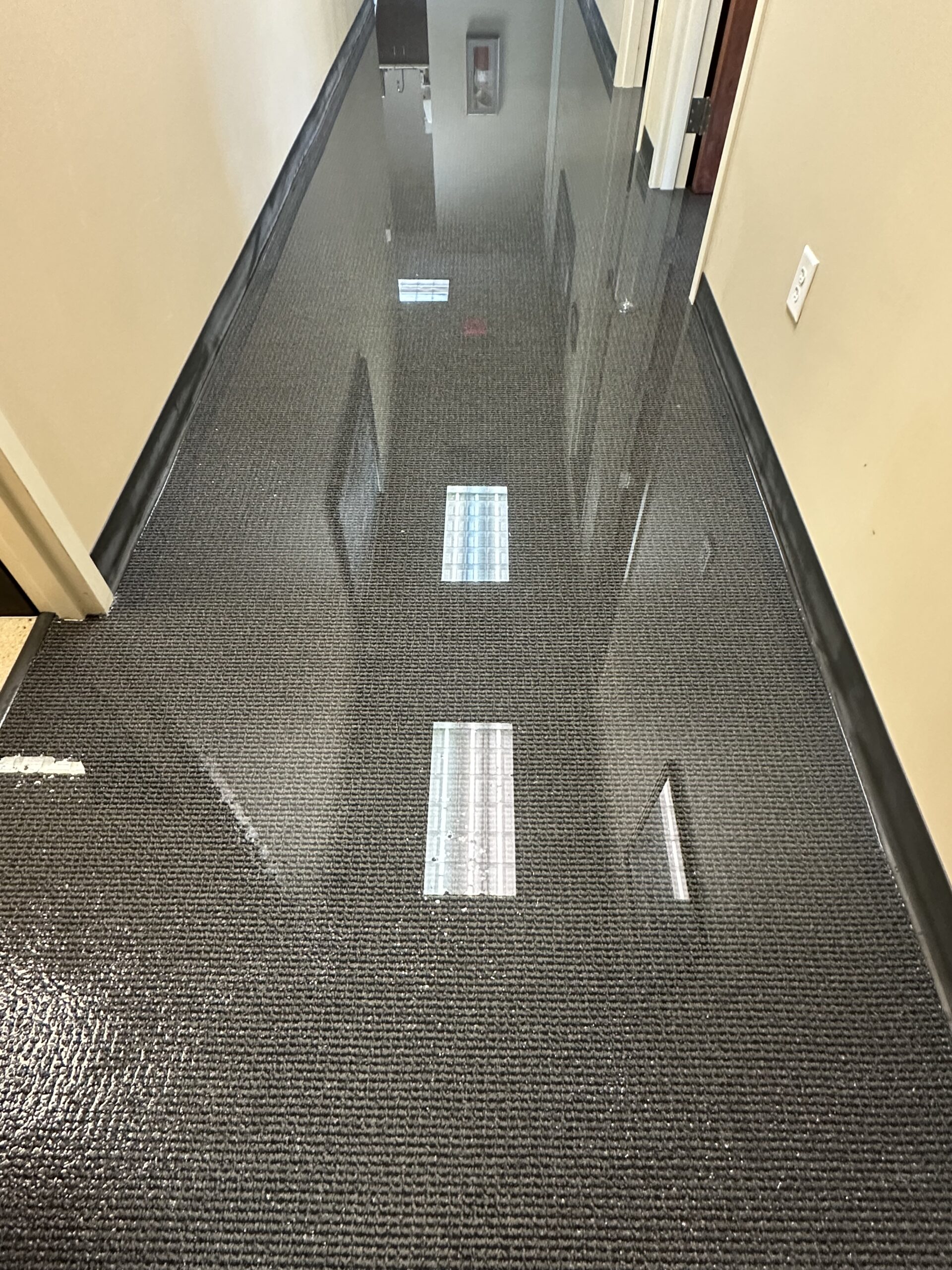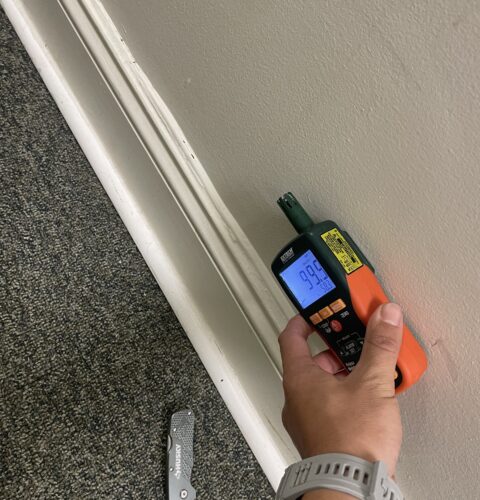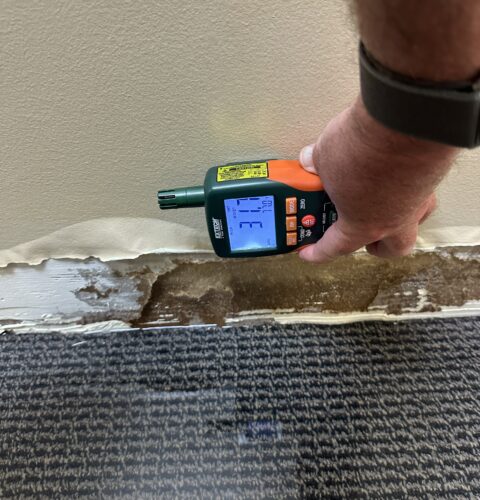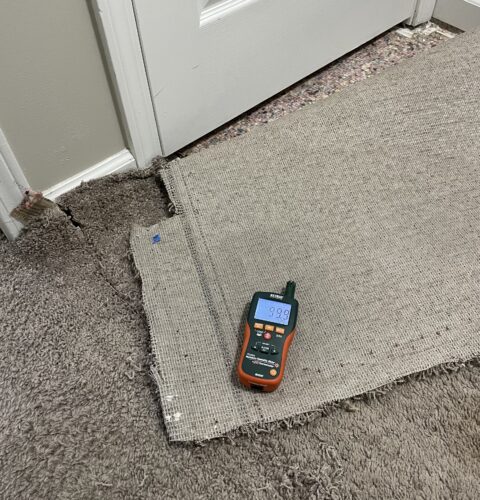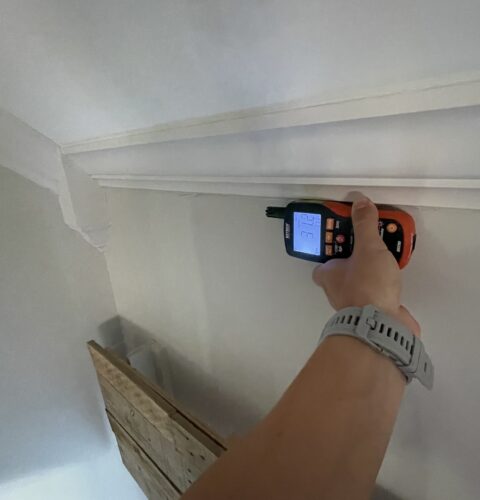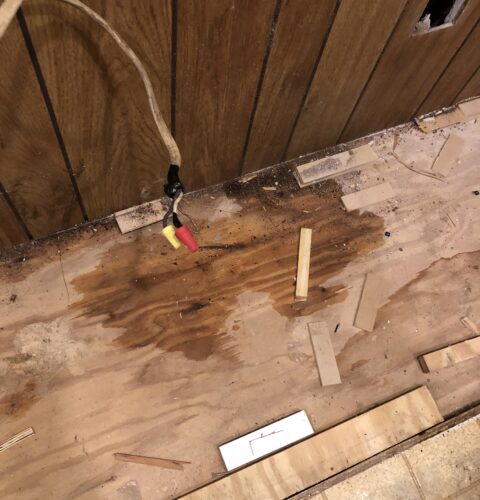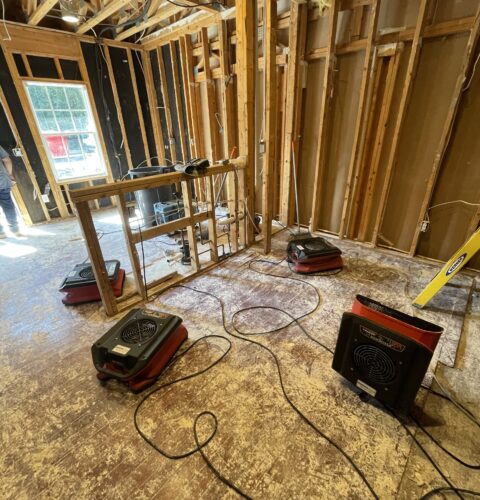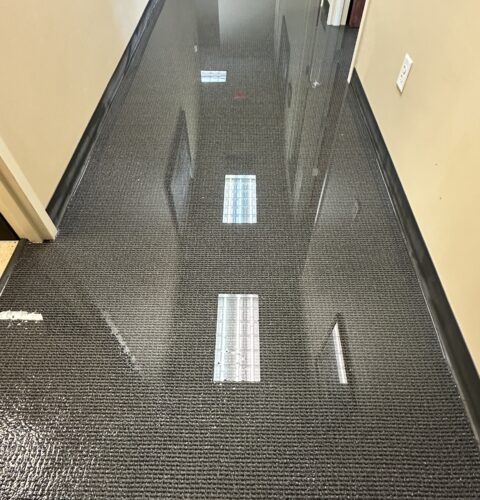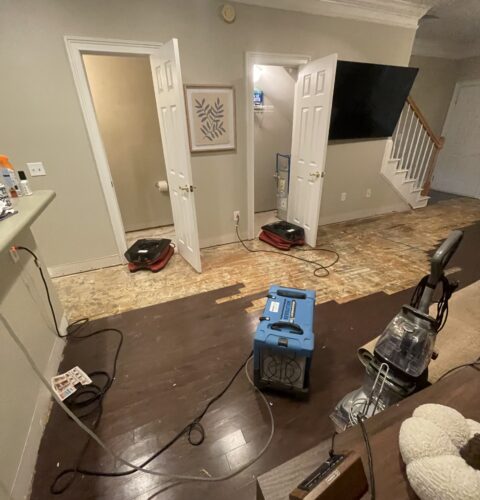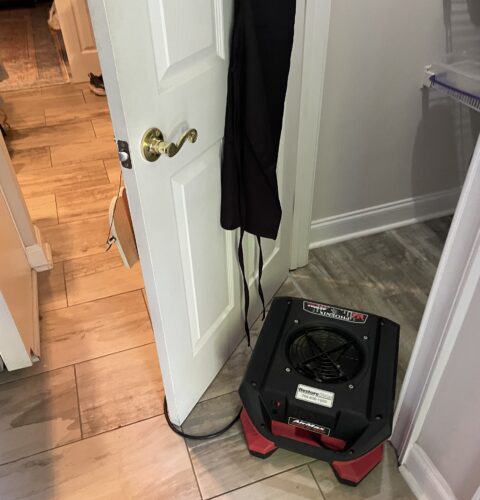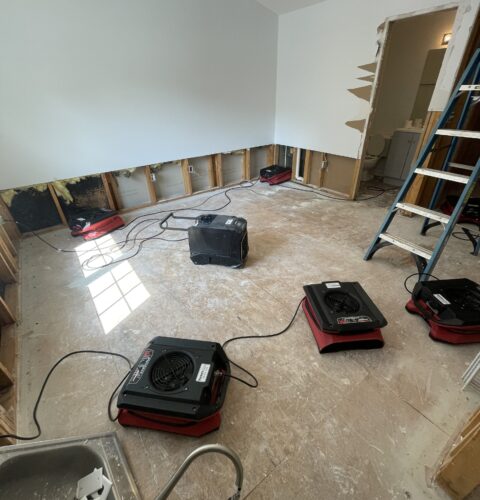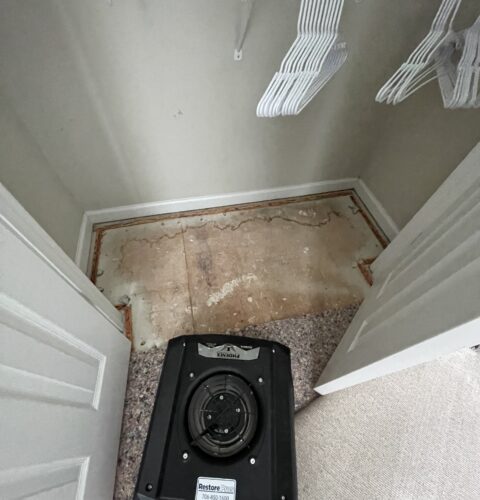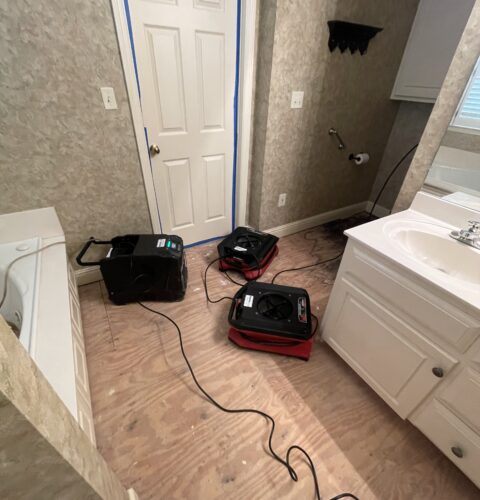Water damage can happen when you least expect it. Whether from a burst pipe, a leaking roof, or heavy rain, it can turn your day upside down in an instant. Knowing what to do in those first few moments is critical. Acting quickly can help reduce damage, protect your belongings, and keep your family safe.
Throughout this guide, we will walk you through the most important steps to take right after water damage strikes. You will learn how to stay safe, stop the water source, and document everything for insurance. We will also explain how to begin drying out your home and why calling a professional restoration company (like Restore Pros) can make all the difference.
By the end, you will have a clear and simple plan to follow. When you know what to do, you can respond with confidence and start the recovery process the right way.
Ready for Step 1?
Step 1: Ensure Safety First
Before you worry about the water itself, the most important thing is making sure everyone is safe. Water damage can lead to more than just a soggy carpet. It can bring hidden dangers, so take a moment to pause and think carefully.
Start by checking for anything risky like electrical outlets near the water. If it looks unsafe, it probably is. If you can do it safely, turn off the power to the affected areas. Next, watch your step. Floors might be slippery or unstable, especially if the water has been sitting for a while.
Also, be careful around the water source. If it looks like dirty or flood water, try not to touch it. That kind of water can carry bacteria and other harmful stuff.
Taking these simple steps can go a long way in keeping you and your family safe until help arrives or you can move to the next step.
Step 2: Identify the Source of Water
Once you know everyone is safe, the next step is figuring out where the water is coming from. Finding the source quickly can help stop more damage and give you a better idea of what you are dealing with.
Sometimes the cause is obvious. Maybe a pipe burst under the sink or your washing machine overflowed. Other times, it might take a little detective work. Look around for signs of leaks in the ceiling, walls, or floors. In some cases, the water may be coming in from outside during a heavy rainstorm.
The type of water source matters too. Clean water from a pipe is usually less dangerous than water from a flood or sewage backup. Try to avoid touching any dirty or discolored water.
At Restore Pros, Our Projects show just how quickly identifying the source can make a difference. From small leaks to major floods, finding the problem early has helped us save homes from severe damage and expensive repairs.
Once you locate the source, you are one step closer to stopping the problem and starting the cleanup.
Step 3: Stop the Water Flow
Once you know where the water is coming from, it is time to stop it if you can. This will help prevent more water from spreading and causing further damage.
Shut Off the Water Supply
If the leak is from a broken pipe or appliance, locate your home’s main water shut-off valve. Turning it off will stop water from flowing into your plumbing system. Most shut-off valves are found near the water meter or where the main line enters your home. In hindsight, you’re probably thinking that this would have been a great thing to know BEFORE this disaster has happened!
Use Temporary Fixes If Needed
If you cannot stop the water completely, try to slow it down. Towels, buckets, or even duct tape can help hold things back until help arrives. Just make sure you are staying safe while doing it.
Even a few minutes can make a big difference. The faster you act, the better your chances of avoiding serious damage.
Step 4: Document the Damage for Insurance
DBefore you start cleaning up, take a few moments to document everything. This can make a big difference when it is time to file an insurance claim. You can NEVER have enough photos!
Why This Matters
Insurance companies need proof of what was damaged and how bad it was. Without photos or records, it can be harder to get full coverage. Water damage spreads fast, so capturing the scene early is key.
What to Do
Take clear photos and videos of all affected areas, including furniture, walls, floors, and any damaged belongings. You can NEVER have enough photos! Every angle you can manage. Make a list of what got wet or ruined. Keep damaged items in a safe spot if possible. If you speak with your insurance company, write down names, dates, and details of your conversations.
These small steps can save you time and stress later, and help you get the support you need.
Step 5: Start the Drying Process
Once the water has stopped and you have taken your photos, it is time to start drying things out. The sooner you begin, the better your chances of saving your walls, floors, and furniture.
Call a Professional Restoration Company first
A common misconception is that you have to go through your insurance company to get permission BEFORE you call a restoration company. You can get the experts on the way, and the restoration company will work with your insurance company. Most restoration companies work with all insurance carriers and vice versa.
Why It Matters
Experts have the tools and training to spot hidden damage, remove moisture from hard-to-reach places, and prevent mold. What looks dry on the surface may still be wet underneath.
What to Expect
When you call a company like Restore Pros, they will assess the damage, begin drying and cleaning, and help guide you through the recovery process. Many also work directly with your insurance company.
Getting help early can save time, money, and stress. Even if you think things look okay, it is better to be sure.
In the meantime, you can:
Remove Standing Water
Use a wet vacuum, mop, or even towels to soak up as much water as you can. If the flooding is heavy, buckets may help in the beginning.
Please know that even though you got the water off the surface of your flooring, and your flooring is “Water proof or Water Resistant” that the water (if it was a significant amount) more than likely got UNDER your flooring. The substances UNDER the floor are NOT waterproof. If moisture gets trapped underneath, mold will grow and your problem just got a lot more expensive.
Let Air Do the Work
Open windows and doors to let fresh air in. Turn on fans and, if you have one, use a dehumidifier. Air movement is your friend here. It helps pull moisture out of the air and out of your home. It is okay if you cannot dry everything perfectly. Just focus on starting the process. Every bit helps.
Step 7: Prevent Future Water Damage
Once your home is dry and clean, it is a good time to think about how to stop this from happening again.
Check for Leaks Regularly
Look under sinks, behind appliances, and around windows and doors. Small leaks can grow into big problems if ignored.
Maintain Your Gutters
Clogged gutters can send rainwater straight into your home. Clean them out often, especially after storms or in the fall.
Install Water Alarms
These small devices alert you when they sense water. You can place them near water heaters, washing machines, or basements. Some insurance companies will provide them and give a discount for having them.
Know Where the Shut-Off Valve Is
As mentioned before: If a pipe ever bursts again, you will want to turn off the water fast. Make sure everyone in your home knows where the main valve is and how to use it.
These simple habits can protect your home and give you peace of mind.
Conclusion
Water damage can feel overwhelming, but knowing what to do makes all the difference. Start by keeping everyone safe, then find and stop the water source. Take photos, begin drying right away, and do not hesitate to call a professional. Finally, take steps to prevent it from happening again.
Each of these steps helps protect your home, save your belongings, and make the recovery smoother. Acting quickly can reduce damage and help you get back to normal faster.
If you are dealing with water damage or just want expert help, Restore Pros is here for you. Our team is ready 24/7 to respond, restore, and guide you every step of the way.
Contact us today for fast and reliable water damage restoration you can trust.
Frequently Asked Questions
You should act immediately. The first 24 to 48 hours are critical to prevent mold and further damage.
For small spills, yes. But larger damage or dirty water should be handled by professionals to ensure safety and proper drying.
It depends on the cause. Most policies cover sudden issues like burst pipes but may not cover gradual leaks or floods without special coverage.
These jobs are divided into two parts: Mitigation and Restoration/Structural.
Mitigation is the process of drying the space. It varies by severity, but most jobs take 3 to 7 days for drying and cleanup.
The Restoration/Structural Repairs may vary greatly based on size and scope and if there is structural damage.
